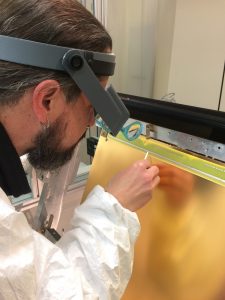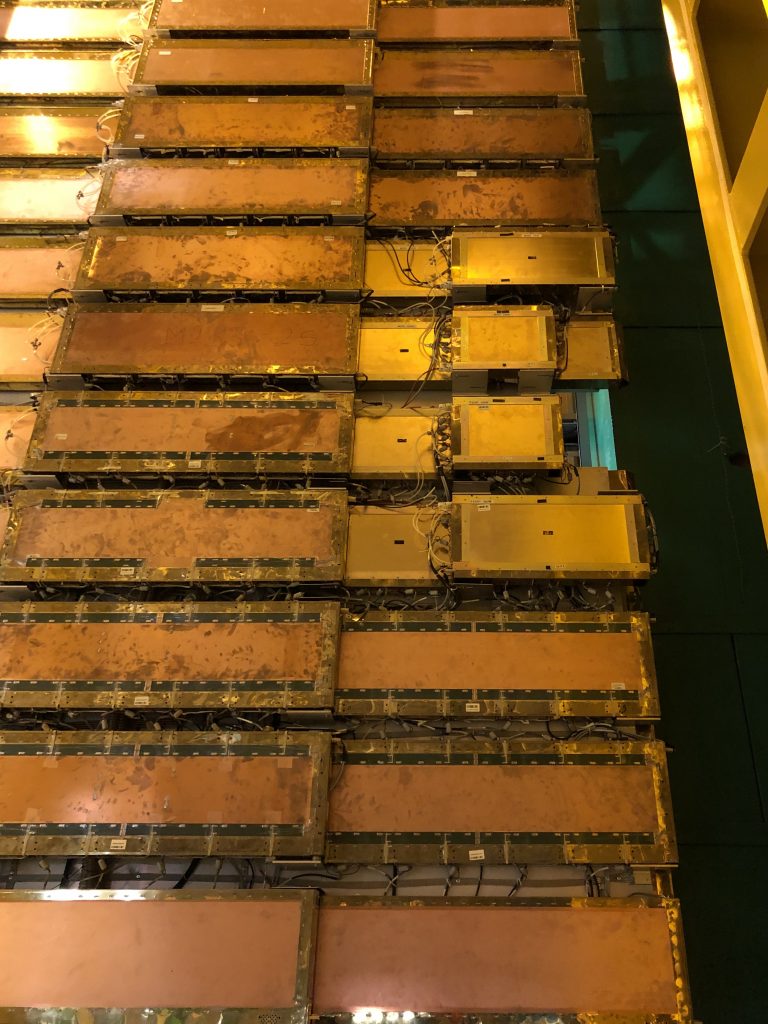Muons – tiny, electron-like particles – are present in the final stages of many B meson decays, and so muon detection is vitally important for the physics studied by the LHCb experiment.
Located at the far end of the detector downstream of the calorimeters, the muon system comprises four rectangular ‘stations’, gradually increasing in size and covering a combined area of 386 m² – a bit more than the size of two volleyball courts.
Each station consists of 276 Multi Wire Proportional Chambers, a type of particle detector where wire electrodes detect the signal generated by the muon passing through a suitable gas mixture. The signals are then read by sophisticated electronics cards, specifically developed for LHCb.
The original muon detector was successfully operated during LHC Run 1 and Run 2 until the end of 2018, showing excellent performance. The main change for the upgraded Muon System, in operation from LHC Run 3 onwards, is the new electronics capable of reading out the full detector at 40 MHz i.e. 40 million times per second.


